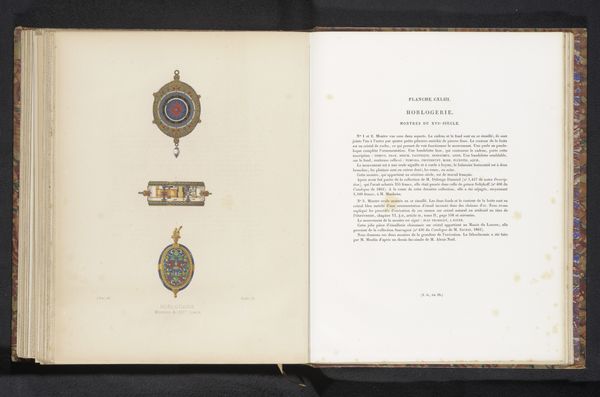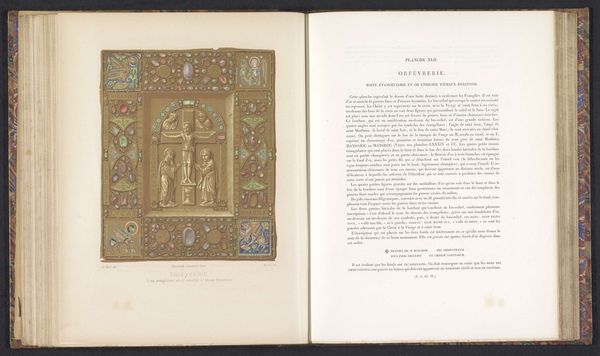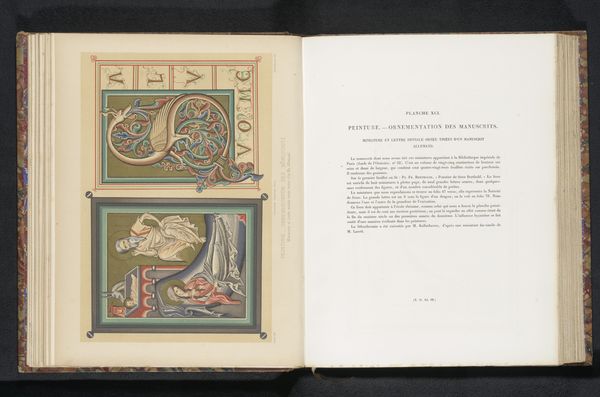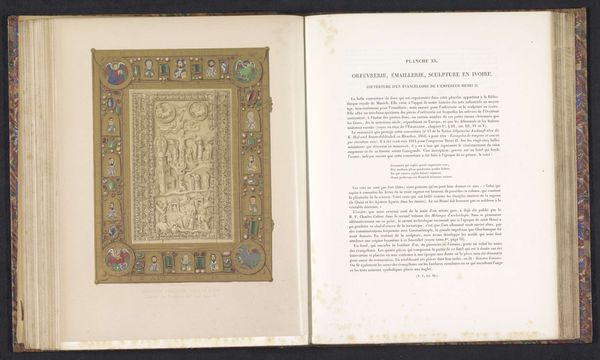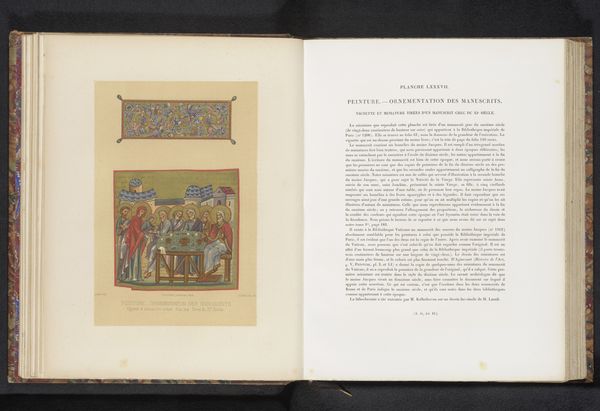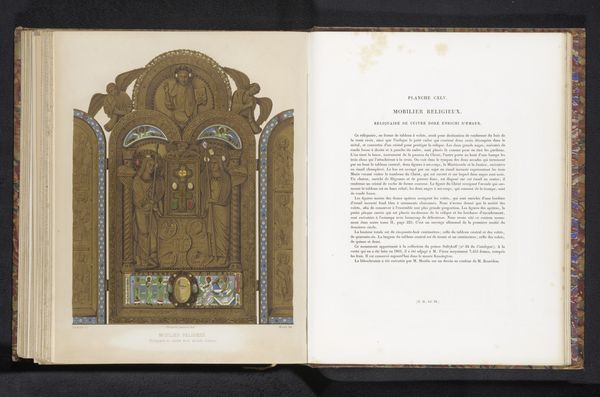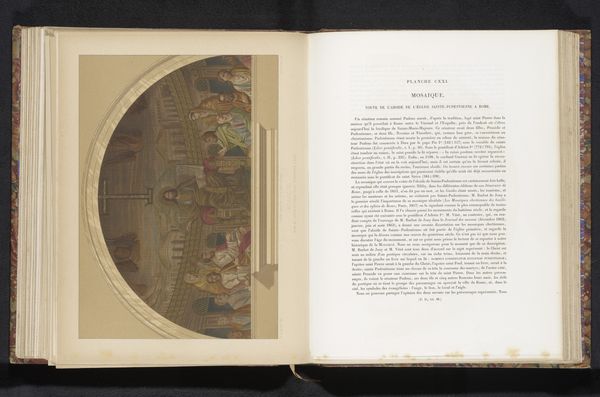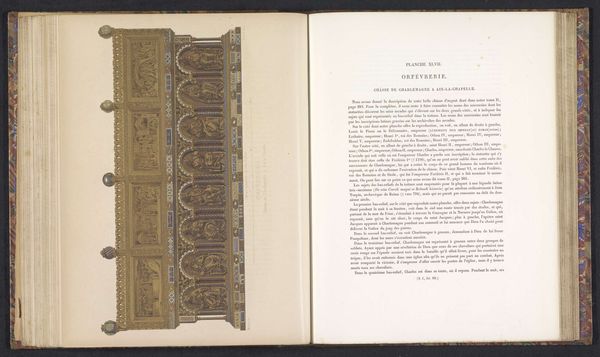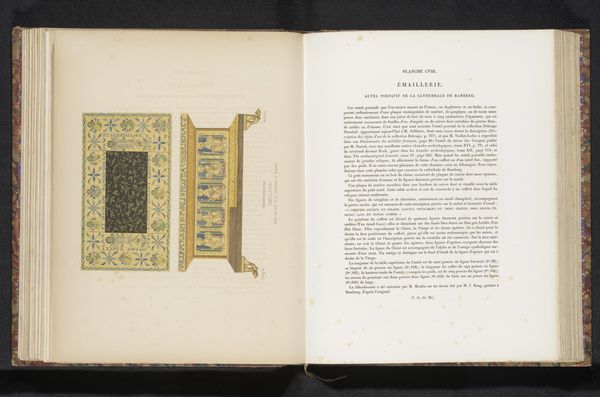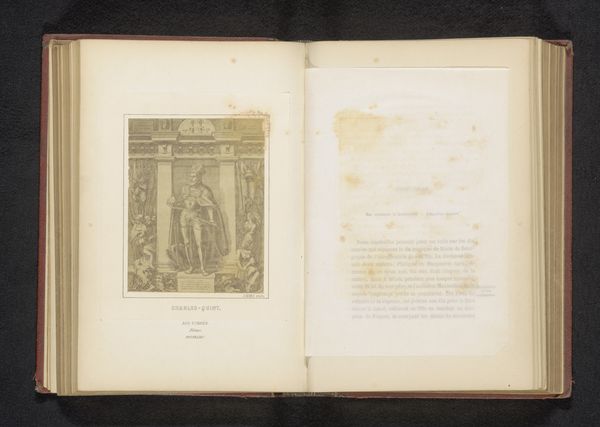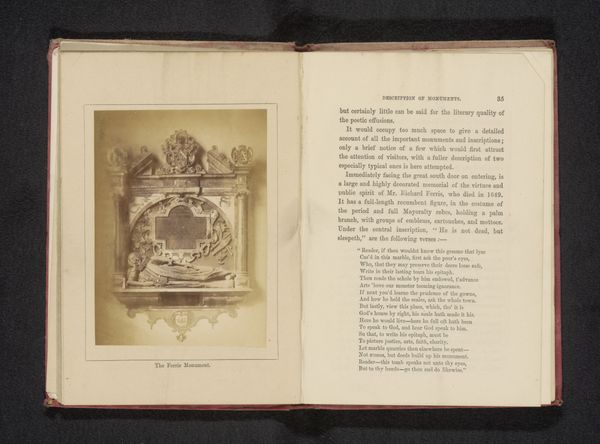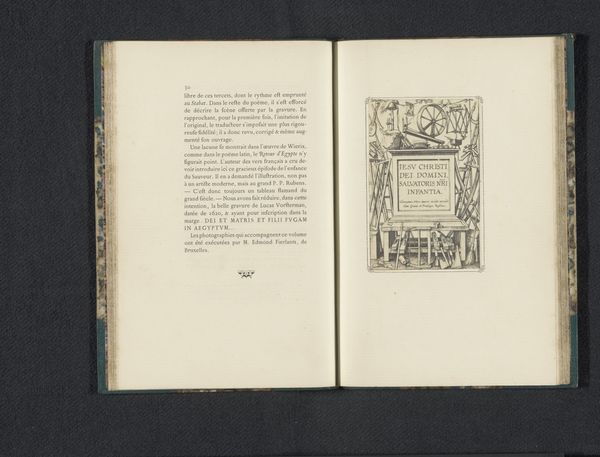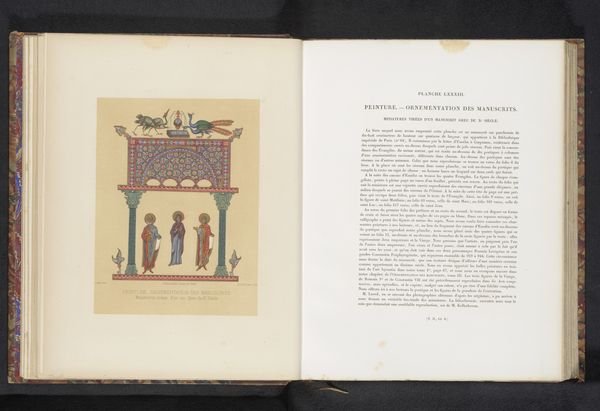
mixed-media, print
#
byzantine-art
#
mixed-media
# print
#
coloured pencil
#
sketchbook art
Dimensions: height 180 mm, width 207 mm
Copyright: Rijks Museum: Open Domain
Editor: Here we have an image of a page from a sketchbook, "Reproductie van een ontwerp van een medaillon met vijf deugden," dating from before 1864 and attributed to Moulin. It seems to be a reproduction of a Byzantine-style enamel work. It is primarily a print, augmented with mixed media. The figure at the center strikes a martial pose. The border decoration features angels. What strikes you most when you look at this page? Curator: My eye is drawn to the interplay between the central figure, stoic and armored, and the gentle faces of the angels peering from the quadrants. Notice how their positioning within the medallion subtly speaks to a balance—almost a dialogue—between power and virtue, defense and grace. Editor: Interesting. I hadn’t really thought about it as a dialogue. So, are you suggesting these aren't just decorative elements? Curator: Precisely! In Byzantine art, and certainly in the context of devotional objects like medallions, every element holds symbolic weight. The warrior may represent earthly strength or divine justice. How might the artist use of those angel figures surrounding him reflect the traditional visual depictions of angels, often seen as messengers, intermediaries, and protectors, framing this figure of authority? Editor: I guess that surrounding a figure of authority with angelic guardians underscores the importance of divine support and perhaps alludes to moral strength. Curator: Yes, exactly! And this image serves as a document itself, mediating these Byzantine forms into another time. The print medium is making these accessible; these devotional practices have relevance outside the rarified sphere of religious devotion, don’t you think? Editor: Absolutely, now that you mention that it creates a new narrative around cultural memory and its evolution, thank you. Curator: Indeed. By appreciating how these symbols recur and transform over time, we enrich our understanding of cultural heritage, and the evolution of visual language.
Comments
No comments
Be the first to comment and join the conversation on the ultimate creative platform.
